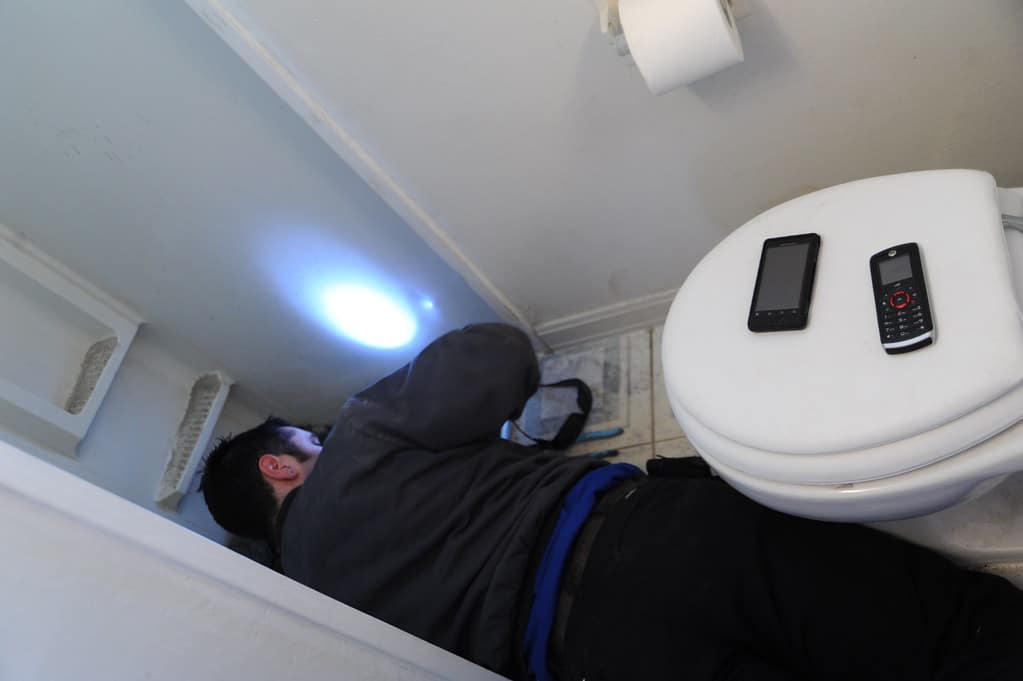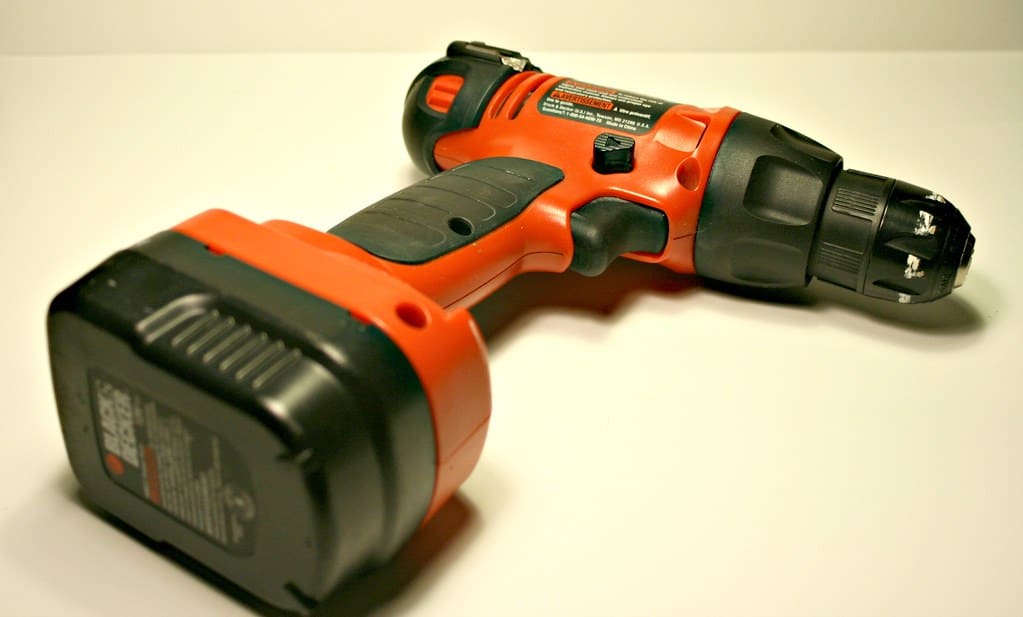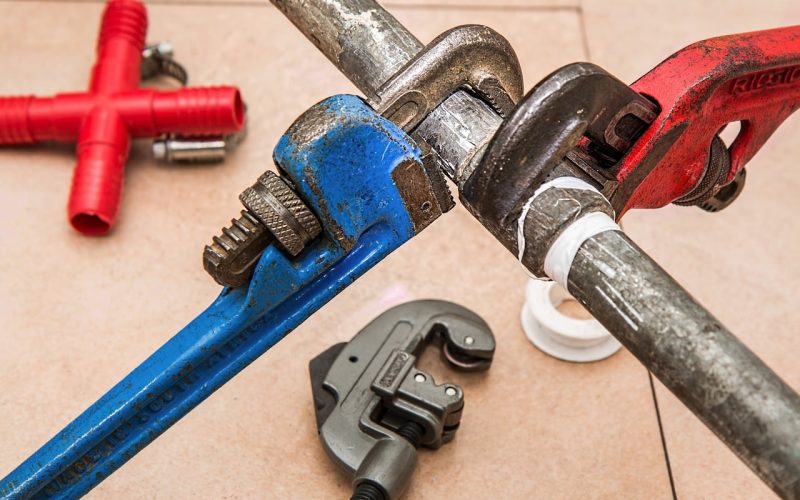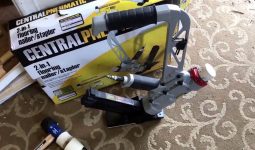Whether you are a seasoned plumber or a DIYer, this article on the best tools for plumbing is all you need to get the perfect tools for the job.
Using the right tools to do simple plumbing-related work, such as repairing a leaking faucet or clearing blocked lines and drains, will only succeed if you have the right tools.
Many plumbing tools will simplify your life by giving you adaptability and dependability without making a major dent in your bank account.
Keeping up with the most recent equipment and tools is essential if you work as a seasonal plumber or plumbing contractor and want to do your job more efficiently and effectively.
The right instruments with the appropriate knowledge can provide a successful solution, whether for routine plumbing maintenance or a major commercial job.
Typically, the procedures and expertise of the specialists are more important in the plumbing industry.
However, the right tools are necessary to execute plumbing duties.
Therefore, they are an essential part of any plumber’s life. Below are some of the best tools for plumbing.
1. Sink Auger

The first tool on this list of best tools for plumbing is Sink Auger. A sink, drum, or canister Auger is the best tool for dislodging and cleaning blockages in sink and tub drains.
Just remember to use a closet auger or toilet auger for toilets instead. A flexible stainless steel cable with a corkscrew point at one end makes up a sink auger.
The cable is wound up within a drum canister and then extended into a drain to reach and clear a clog.
The cord is locked to the canister by a thumbscrew, and the drum includes a handle.
As you enter the cable into the drain and turn the handle, the revolving drum snakes the cable through bends in the drain pipe, allowing the cable tip to reach into clogs and pull them out.
2. Pipe Wrench
The largest Wrench used by a plumber is the pipe wrench. Plumbers use these powerful tools to tighten and release nuts and fittings on piping.
One of these wrenches is used to hold the pipe in place, while the other is used to turn the nut or to fit in the appropriate direction.
Prepared plumbers normally use a full set of pipe wrenches, which come in different lengths.
3. RIDGID 824 Plumbing Wrench
This tool is another one of the best tools for plumbing. The RIDGID 824 plumbing wrench combines quality and comfort.
The tool offers exceptional durability due to its aluminum construction, allowing you to use it for extended periods without breaking it.
It is 40% lighter than conventional pipe wrenches because of the same aluminum structure, so much so that clutching a feather would feel more comfortable than a large wrench.
This accomplishment merits recognition, especially given its size of 24 inches. Speaking of size, this size is perfect for pipes between 1½ and 2½ inches in diameter.
This adjustable Wrench has an L-beam handle with a fully floating forged jaw for a better and more comfortable grip.
Even though the tool’s name makes it sound “rigid,” it is changeable and versatile.
It has self-cleaning threads, a non-stick adjustment nut, and a readily changeable hook jaw, heel jaw, and spring assembly.
This means that maintenance is also a snap in addition to supporting pipes up to 3″.
With a little movement of parts here and there, you can quickly clean even the ridges’ most difficult-to-reach areas.
You are rewarded with premium quality, even though it is more expensive than other wrenches.
4. Internal Wrench
This is a fantastic tool for any intricate and untidy fitting surrounded by a fresh, clean space.
Use this tool to gently pull any damaged internal component out while rotating it without harming the healthy external component.
Most plumbers carry an internal wrench in their collection of wrenches for various plumbing chores because it is a component of pipe wrenches.
5. Toilet Auger
Next on our list of the best tools for plumbing is Toilet Auger. To unclog toilets, utilize the toilet auger, also known as a closet auger or water closet auger.
As the tools are made for different uses, you should use something other than a sink auger for toilets or a toilet auger for ordinary drains.
A long metal rod with a curve is the toilet auger’s reach into the toilet bowl’s bottom hole. A rubber sleeve is over the curve to avoid scratching the toilet’s porcelain.
The auger cable is snagged into or through the blockage by pushing and rotating it once the equipment is in position.
6. Bacho 325 Hacksaw
According to plumbing experts and ardent DIYers, the Bahco 325 hacksaw’s outstanding construction and ergonomic design have earned it a spot among the top 10 best hacksaws.
This unit is made of corrosion- and rust-resistant aluminum, upholding Bahco’s stellar reputation while ensuring the tool lasts for decades in top condition.
Other ergo-designed instruments exist, but this one is more difficult. The two padded handles and the overall ergonomic design are to be grateful for how simple it is to use.
The 12-inch shatterproof bi-metal blade with a 55-degree alternative mounting and exceptional blade tension lets you quickly and accurately cut through tough objects like pipes, nuts, and screws.
Since you can replace the blade easily and quickly thanks to the swift release mechanism, you’ll never have to deal with a blade as dull as a butter knife.
It only requires one press of the spring-loaded mechanism to remove the dead blade and put a fresh one into its place.
7. Plumber’s Tape
Plumber’s tape is an essential part of the best tools for plumbing. One of the necessities for a plumbing toolkit is a plumber’s tape.
Other names for it include PTFE tape, Teflon tape, thread sealing tape, and thread seal tape.
It is a frequently used and reasonably priced instrument that aids plumbers in stopping and patching any leaks at the pipe junctions.
Before twisting and fixing the pipes and fittings, plumbers wrap this thin, white tape around their threads.
You receive a silky-textured, temperature-resistant tape that never dries out and lubricates the joints just enough to stop leaks.
Overall, it’s a straightforward but helpful tool that is beneficial whenever extra caution is needed to prevent leaks in plumbing work.
8. Flange Plunger
The flange plunger, also known as a ball plunger or toilet plunger, has a unique design used to unclog toilets.
While it performs similarly to a regular plunger, it has an added flange- an expanded rubber flap below the dome of the plunger head—that aids in sealing the toilet bowl’s bottom opening.
Once the bottom entrance is sealed, the plunger successfully creates the hydraulic pressure necessary to dislodge most toilet clogs.
9. Diamond Hole Saw
Next on our list of the best tools for plumbing is the Diamond Hole Saw.
Diamond Hole Saw is the tool to call when you need to effortlessly and affordably create perfectly round holes in a surface for pipe installation.
This hole cutter’s durability and quick performance place it high on the list of favorites among plumbers and DIYers.
The machine has vacuum-brazed diamond grit that allows it to cut quickly without harm.
Suppose you put it on a surface like ceramic, porcelain, plaster, or tiles, close your eyes, and boom! A gorgeously rounded hollow that is one inch deep has developed.
The tool doesn’t heat up or produce a lot of trash because it uses segmented teeth. This move truly embodies the phrase “neat and clean”!
The Quick Change universal hole saw system allows for quickly removing the plugs.
Therefore, swapping out the drill bit for one with the necessary diameter will take a few seconds to make a hole of a different size.
Given that there is only one component instead of a complete set, the price may seem more to clients on a tight budget.
However, the durable construction and lightning-fast hole drilling make the price tag worthwhile.
10. Hand Auger
A hand auger can be a lifesaver when plungers cannot relieve clogging.
It has been around for a while, and today, there are numerous technologically sophisticated augers with various features.
The manual circular instrument lets plumbers draw the cable deeply and clear the clog with a hand crack.
In addition, this instrument is inappropriate for clearing toilet obstructions, which all plumbers should know.
11. Cup Plunger
Next on our list of the best tools for plumbing is Cup plunger. The most popular plumbing tool in a home may be a cup plunger.
It has a wooden handle that removes clogs from sinks, baths, showers and a rubber cup-like form.
Do not use this plunger to unclog toilets; instead, use a flange plunger with a unique design.
However, when the flange is tucked inside, some flange plungers can be utilized as regular cup plungers.
12. Pipe and Tube Cutters
Pipes and tubes must always be cut, resized, and remolded for plumbing projects.
It is a fundamental task in every project; therefore, having a top-notch pipe cutter is crucial to cutting pipes cleanly and with the least work.
The most recent mechanical tube cutters will perform better with a simple mechanism than Hackshaw.
With the aid of tube cutters, pipes made of copper, plastic, brass, or any other material can have a smooth edge, providing a seamless finish to your job.
13. Drain-Cleaning Bladder
Number thirteen on our list of the best tools for plumbing is a Drain-cleaning bladder. Using water pressure, a drain-cleaning bladder is useful for unclogging obstructions.
The device attaches to the end of a regular water hose, and when the water is switched on, the rubber bladder expands.
Open the clean-out access on your drain, insert the drain bladder inside, and turn on the water.
Expanding the bladder will prevent water from flowing backward while pushing blockages forward under strong water pressure.
14. Faucet Keys
Plumbers use a straightforward four-way or X-shaped cross key to open and close spigots and sillcocks.
The faucet key is a simple yet crucial item for plumbing professionals. This can last very long and may come in several metal alternatives.
Since faucet keys have been a necessary component of the plumbing business for many years, the list of plumbing tools would only be complete with them.
15. Chanel-type Pliers
Next on our list of the best tools for plumbing is Chanel-type Pliers. Channellock, another name for slip-joint pliers, is a popular brand name for channel-type pliers.
Expanded adjustment sections and angled jaws are similar to normal adjustable pliers, enabling you to grasp pipes or virtually any size plumbing piece.
The long grips offer great leverage for twisting and squeezing. They can gently tighten big plastic nuts or hold thick steel pipes on sink drains.
This should be the specialty plumbing tool that you own the most of.
16. Snake Machine
The snake machine also functions as a drain snake and a plumber’s snake. When hand augers provide additional assistance, it is a higher-level remedy for clogged drains.
Additionally, it is a protracted motorized auger that digs down far and removes blockages.
Electric equipment called a snake machine uses a long wire to thoroughly clean drains and pipelines.
For difficult drainage concerns, a snake machine is a necessary instrument to do the operation quickly and efficiently.
17. Hex Wrenches
Hex keys are a type of driver with a hexagonal bit, sometimes called Allen wrenches.
They are utilized in various sectors, from furniture to automobile plumbing and everything in between.
Hex keys are crucial to your plumbing toolkit since hex bolts and plugs are frequently used to assemble faucets and fixtures.
18. Plumber’s Flashlight

Plumbing projects might only sometimes be done in well-lit, daytime areas. Having a flashlight with you is crucial to operating comfortably in small settings.
Lightweight, long-lasting flashlights can offer the visibility required in cramped, dark areas to repair extensive plumbing systems, including underground ones.
19. Faucet-Valve-Seat Wrench
The next tool on our list of the best tools for plumbing is the Faucet-Valve-Seat Wrench.
Use a faucet valve-seat wrench to remove the valve seats on a compression faucet.
The first type of faucet, a compression faucet, presses a rubber washer against a valve seat inside the faucet body.
A compression sleeve puller is also required. The valve seat may become worn and rough with wear and tear, preventing a full seal.
When that occurs, you can use a valve seat wrench to remove and replace the valve seat.
If you cannot remove the seat cannot be removed, use a reseating tool to regrind it to a flat surface.
20. Pipe Inspection Camera
Not every plumber can access this specialized instrument, which is not required for daily use.
However, a pipe inspection camera is excellent for examining difficult-to-reach areas and concealing delicate plumbing system components.
It provides images of inside surfaces and clogged pipes that you should avoid touching unless you are certain of something.
For huge, intricate plumbing projects that are sensitive to invasive techniques, it’s a great investment.
21. Plumber’s Putty
A soft, malleable sealing material called plumber’s putty creates watertight seals around faucets, drains, and other plumbing components.
The putty’s design prevents it from drying out or hardening with time and helps keep the seal intact.
Making a seal between a sink and a basket filter is one of the plumber’s putty’s most widely used applications.
22. Cordless Drill

Every plumber’s preferred tool for natural causes is generally a cordless drill.
You won’t need to be concerned about the site’s lengthy wire or electrical supply if you use a cordless drill.
Because it runs on batteries, you can have extra batteries on hand to ensure that you have enough power to complete the drilling task.
This tool is easier and more practical than the traditional drilling solution.
23. Tubing Cutter
The tubing cutter is a crucial plumbing instrument when working with copper pipes.
Tubing cutters make clean, square copper cuts much easier than a hacksaw.
It has a flat pressure wheel that exerts pressure as you crank the tool’s knob and a thin cutting wheel that cuts the metal. This is one of the best tools for plumbing.
Tighten the knob after every two or three rotations as you revolve the tool around the pipe while clamping it to the pipe. The cutting wheels slowly slice through the material.
Use the de-burring tool (a triangular metal piece connected to the body of the tubing cutter) to remove the burr from the inside of the pipe after the cut.
24. Faucet Packing, Washers, and O-Rings
For repairing leaking valves on sinks, radiators, and other outdated or conventional equipment, faucet packing, rubber washers, and O-rings are indispensable.
To make a watertight seal, you wrap packing, graphite- or wax-coated thread, over the valve stems and tuck it under packing nuts.
Rubber washers and O-rings are sold in assortment packs that include a range of sizes and shapes.
A variety pack will contain the parts you need if you’re repairing an old faucet and need help finding an official replacement part at the store.
One is useful to have on hand because it can prevent you from making a trip to the store.
25. Stubby Screwdrivers
Last on our list of the best tools for plumbing is Stubby Screwdrivers. A plumber’s toolbox must have both flat-head and Phillips-head stubby screwdrivers.
Stubby screwdrivers, as opposed to conventional ones, are utilized in tight spaces, which you will undoubtedly encounter when working on the plumbing in your home.
All professional plumbers can benefit from using these 25 plumbing tools. Each tool is distinct from the others in terms of features and pricing.
Therefore, if you were wondering what the best plumbing tools are for any residential project—small or large—you now have the list.








